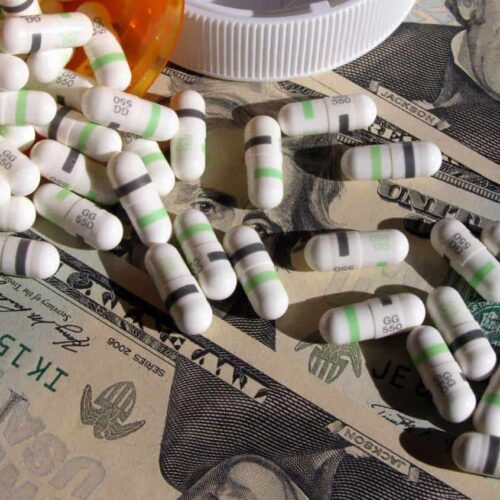Introduction
Americans spend more per capita on health care than people anywhere else in the world, yet outcomes in every other developed country are better on almost every measure, from infant mortality to life expectancy.
A big reason for that is our collective gullibility. We continue to believe what many politicians tell us, despite evidence to the contrary: that we have the best health care system in the world.
Similarly, we continue to be persuaded by insurance companies that they’re essential to the system and better than any government program could possibly be at controlling health care costs.
And we are still buying the pharmaceutical industry’s argument that if Americans don’t keep paying more for prescriptions than anyone else on the planet, drug companies—which have gargantuan profit margins—won’t be able to keep developing the drugs we need.
To understand how foolish we are, let’s consider the war of words that recently erupted between health insurers and drug companies.
First, though, let’s take a look at a new study that compares how much Americans pay for prescription medication compared to what folks in a few other industrialized countries pay.
The study, released last week by the Kaiser Permanente Institute for Health Policy, showed that pharmaceutical spending in the U.S. per capita had reached $1,010 in 2012. The next highest spender was Germany at $668 per capita. Australia came in at $558.
Am I the only one who finds it more than a little upsetting that the Germans spend 66 percent of what we spend for drugs and the Aussies spend just 55 percent?
As the Kaiser researchers point out, those countries’ citizens get a much better deal on their meds because their federal governments have policies in place to regulate drug prices. And those nations are not alone. Every other country in the developed world has instituted some kind of price control mechanism. Except, of course, the United States.
Kaiser’s numbers are consistent with those from a 2013 analysis by the 34-member Organization for Economic Cooperation and Development (OECD), which showed that Americans spend 40 percent more on drugs than the next highest spender, Canada.
As PBS pointed out last year in a report on drug prices around the world, government agencies in other countries set limits on how much they (and their citizens) will pay drug makers for their various products.
“By contrast,” as PBS further pointed out, “in the U.S., insurers typically accept the price set by the makers for each drug, especially when there is no competition in a therapeutic area, and then cover the cost with high copayments.” (Emphasis mine.)
PBS nailed it. American insurance companies are essentially powerless when it comes to negotiating prices with Big Pharma, just as they are becoming increasingly powerless in controlling the cost of hospital care and physician services. The way insurers continue to make money is not by doing a good job for their customers but by constantly shifting more of the cost of care to those customers.
If we were paying close enough attention to what insurers were saying during the health care reform debate, we would have realized that they are, for all practical purposes, impotent when it comes to holding down costs. All we had to do was read between the lines.
One of the insurers’ consistent talking points was that instead of putting them in the crosshairs, policymakers should instead focus on “the real drivers of health care costs.” Those “real drivers,” according to insurance company executives, are the companies and people who actually provide most of the care we need: hospitals, doctors and pharmaceutical companies.
The industry’s impotence was on display yet again last year when the drugmaker Gilead slapped a $1,000 per-pill price tag on its new hepatitis C medicine.
“Is this ‘whatever you can get away with’ pricing here?” America’s Health Insurance Plans’ then-CEO, Karen Ignagni, asked during a health care conference.
The answer: yes. Drug companies can get away with it because private insurance companies can’t stop them. And, with the exception of the Veteran’s Administration and Medicaid programs, neither can the U.S. government. In fact, the pharmaceutical industry was able to persuade lawmakers to make it illegal for the government to negotiate with drug companies when they enacted the Medicare drug benefit in 2003.
It’s telling that, in response to Ignagni’s rhetorical question, a pharmaceutical industry spokesman said, almost mockingly, that insurers should do more to control health care costs.
As for Big Pharma’s claim that Americans must pay more to keep their R&D departments humming, which we seem to have bought hook, line and sinker, the Kaiser researchers, like many others before them, suggested we’re being duped.
“There is evidence that companies overestimate the amount they actually spend,” they wrote, citing a 2011 analysis that found the median R&D costs for producing a new drug was $43 million, which is just 5 percent of the $802 million figure the industry routinely cites.
Maybe the question we should be asking is, how much longer can we afford to be so gullible?
Wendell Potter is the author of Deadly Spin: An Insurance Company Insider Speaks Out on How Corporate PR is Killing Health Care and Deceiving Americans and Obamacare: What’s in It for Me? What Everyone Needs to Know About the Affordable Care Act.
Read more in Health
Wendell Potter commentary
For-profit hospitals mark up prices by more than 1,000 percent because there’s nothing to stop them
Commentary: health facility charges run amok
Wendell Potter commentary
Free market ideology doesn’t work for health care
Costs imposed by ‘medical industrial complex’ defy reason


Join the conversation
Show Comments